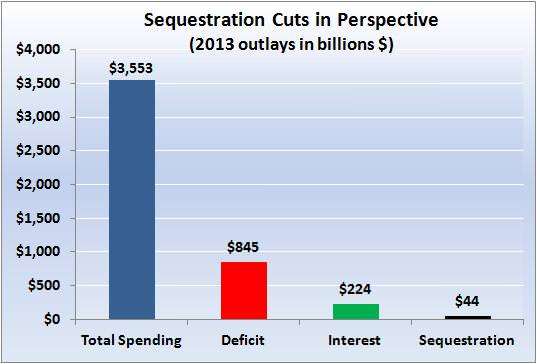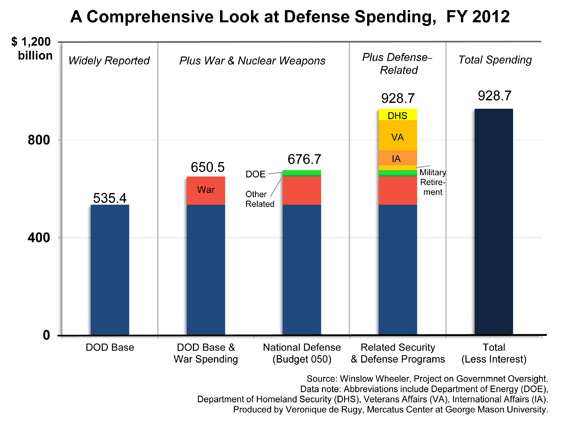Pentagon Frets Billions in Sequester Cuts But Wastes $1.5 Trillion on Non-Working Fighter Jet

When it comes to sequester cuts, no member of the Obama administration has been more outspoken and pants-wetting that outgoing Defense Secretary Leon Panetta. Here he is on a recent Sunday morning show:
"I have to tell you it is irresponsible for it to happen. I mean, why in God's name would members of Congress, elected by the American people, take a step that would badly damage our national defense, but more importantly undermine the support for our men and women in uniform?…If Congress stands back and allows sequester to take place, I think it would really be a shameful and irresponsible act."

Back in 2011, he wrote to Congress about that sequestration could under the worst-case scenario amount to "23 percent" of military spending, which is simply not true. The sequester cuts, should they happen, will at most knock a few tens of billions of dollars off this year's base budget for Defense, bringing the total down below $500 billion.
After which point it will start rising again, despite a much-ballyhooed end to two wars that have been very expensive in terms of lives lost and treasure spent. As the nearby chart prepared by Reason columnist and Mercatus Center economist Veronique de Rugy shows, the sequester means cumulative defense spending through 2021 would total $4.8 trillion instead of $5.3 trillion. Even the U.S. government would sign off on whatever torture Panetta is using on basic math.
And here's a reminder: About half of the $85 billion sequester cuts will come from defense spending. But only about half of those spending cuts - $44 billion - will happen in fiscal year 2013. So we're looking at an immediate cut in planned defense spending of something on the order of $20 billion.
In any case, should the sequester cuts happen, they come after Defense's base budget - which doesn't include war spending, a variety of Homeland Security bits, and other supplemental expenditures - rose by 40 percent over the past decade or so, from $397 billion in 2001 to around $550 billion this year. Because military personnel is exempted from the sequester (as is war funding and a bunch of other stuff), there's no reason to sweat our preparedness over such trims. And, as the Congressional Budget Office notes in its recent budget outlook document, milit

ary outlays subject to budget cap limits are expected to increase from $518 billion in 2014 to $576 billion in 2021. Over the same time frame, total defense spending (which includes war spending), will jump 14 percent, rom $593 billion to $679 billion (all figures in current dollars; see Table 1-5).
Can we get a show of hands of people who would like to see their salary growth subect to such a "shameful" expansion?
In his 2011 missive to Congress, Panetta warns of all manner of things that will have to be cut should the sequester happen. Among his laundry list of complaints, he notes that the U.S. could end up with "the smallest tactical fighter force in the history of the Air Force."
It's not exactly clear what that means or why it matters. But it may not be such a bad thing if taxpayers started funding fewer fighter jets. The Fiscal Times notes that last Friday (the traditional day to dump bad news), the Pentagon announced that it was grounding its F-35 fighter jets, which were approved during the Clinton administration (look it up kids). Fiscal Times reports:
This was the second time in two months the plane has been taken out of service….after this latest failure, the problems with the F-35 are simply too numerous to ignore.
Equally impossible to ignore is the $1.5 trillion price tag for one of the biggest failures in Pentagon history. $1.5 trillion is the cost of operating the air craft for 55 years, an amount that has been consistently increased as the program drags on. It's the most expensive weapons system the Pentagon has ever commissioned. And as problems mount, there are growing concerns that the F-35 will never fly a combat mission.

Because of competing claims among service branches, the Marines, the Navy, and the Air Force all got their own, specially tricked out versions, each of which is dysfunctional in its own way:
The Pentagon ordered nearly 2,500 planes for $382 billion, or fifty percent more than the original cost.
As the price soared, the Pentagon in 2010 deemed the program "too big to fail." Yet it continues to fall short. Recent engine troubles are just the latest in a series of mechanical failures. A pilot was killed when oxygen to the cabin was cut off. The aircraft are running too hot, limiting their ability to operate in warm environments.
The original delivery date was supposed to be 2010. Then it was delayed until 2012. Now, it's not expected to be in service until 2019.
And there's this kicker: "If the F-35 order is filled, DOD will have 15 times as many planes as China." And 20 times as many as Russia.
So that's the Pentagon culture, ladies and gents. Willing to bitch and moan and drag its heels over its share of sequester cuts - and willing to go to the mat to protect a non-functioning, over-budget, and tactically outdated fighter jet. If Defense can't complete its mission to protect America after March 1, it's not because of a rounding error taken out of its budget. It's because of leadership that has never learned how to gets its priorities straight.
And even as Sens. John McCain (R-Ariz.) and Lindsey Graham (R-S.C.) join Panetta in his pity party, here are "3 Reasons Conservatives Should Defense Spending Now!"


Show Comments (143)